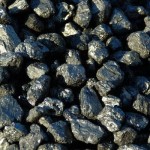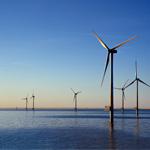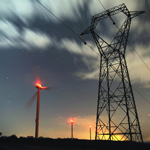 Some strange news has emerged from the World Coal Association recently: the WCA claims that wind turbines use a large amount of coal during their production. At the European Wind Energy Association we recognise that energy is needed during the manufacturing and transport of wind turbines as well as during installation site works, but the amounts suggested by the WCA are way above the reality.
Some strange news has emerged from the World Coal Association recently: the WCA claims that wind turbines use a large amount of coal during their production. At the European Wind Energy Association we recognise that energy is needed during the manufacturing and transport of wind turbines as well as during installation site works, but the amounts suggested by the WCA are way above the reality.
In fact, a wind turbine consumes less than 1g of coal per kilo-Watt hour of electricity produced over its full lifecycle. A coal plant, meanwhile, will consume over 300 times this amount per kWh of electricity, assuming a 40% average efficiency. Moreover, one wind turbine pays back the coal it uses during production with just one month of operation. Looking at all fossil energies used during the lifecycle of a wind turbine, the ‘fossil fuel debt’ ranges from 3-8 months of turbine operation.
 Wind Directions – the wind industry’s very own magazine bringing you the latest wind energy insight and analysis – needs you. The Wind Directions team is looking to find out what you find interesting about the magazine and what content you would like to see more (or less!) of.
Wind Directions – the wind industry’s very own magazine bringing you the latest wind energy insight and analysis – needs you. The Wind Directions team is looking to find out what you find interesting about the magazine and what content you would like to see more (or less!) of.
It takes just 10 minutes to fill in, and all participants can enter the draw to win one of three Amazon Kindles!
How do you read Wind Directions – online using the eMag? How do you rate this? Would you like to see more editions of Wind Directions in the year? Are you an advertiser with feedback we might find useful? This is your chance to give your input into a magazine that aims to meet your needs.
We’re looking forward to your answers to these questions and more. Fill in the survey now.
Read the latest Wind Directions
 Wind energy made a splash in many media sources this week with news that the sector continues to grow despite the economic gloom gripping Europe. Here’s a short round-up of what the papers said:
Wind energy made a splash in many media sources this week with news that the sector continues to grow despite the economic gloom gripping Europe. Here’s a short round-up of what the papers said:
This week the European Wind Energy Association (EWEA) released new data showing that the wind energy sector in Europe added 9,616 MW of new wind energy capacity last year – making up over a fifth of total new power installations, the Guardian reported. The EWEA points out that the industry has delivered an average annual growth of almost 16% over the last 17 years, the article adds.
 With more than 450 people dying as of Tuesday because of the freezing temperatures currently sweeping Europe, news reports that Russia has reduced its natural gas supplies to some European countries once again highlights the problems of security of supply of imported fossil fuels.
With more than 450 people dying as of Tuesday because of the freezing temperatures currently sweeping Europe, news reports that Russia has reduced its natural gas supplies to some European countries once again highlights the problems of security of supply of imported fossil fuels.
European policy makers can’t do anything about the punishingly cold polar air that is expected to hover over the region for at least another week, but they can make sure that proposals currently before the European Parliament and Council of Ministers to speed up the permitting, and assist the financing, of grid extensions and upgrades are approved without being watered down. They can also put the right policy framework in place up to and beyond 2020 in order to boost the supply of domestically produced renewable energy.

Susanne Nies
Some of the windiest conditions – and best electricity generating opportunities – are found out at sea or in remote on-land spots. But if we, as people with cars and boats to transport us, struggle to get to Europe’s more isolated locations, electricity has an even greater battle to travel from some sources to demand.
What is more, electricity faces an uphill struggle to travel between EU countries since there is no single market for electricity in Europe, and very limited infrastructure to carry it across borders. For example, Spain has an interconnection rate of just 3.6%, making it a virtual island.
 Some strange news has emerged from the World Coal Association recently: the WCA claims that wind turbines use a large amount of coal during their production. At the European Wind Energy Association we recognise that energy is needed during the manufacturing and transport of wind turbines as well as during installation site works, but the amounts suggested by the WCA are way above the reality.
Some strange news has emerged from the World Coal Association recently: the WCA claims that wind turbines use a large amount of coal during their production. At the European Wind Energy Association we recognise that energy is needed during the manufacturing and transport of wind turbines as well as during installation site works, but the amounts suggested by the WCA are way above the reality.






 Comments
Comments



